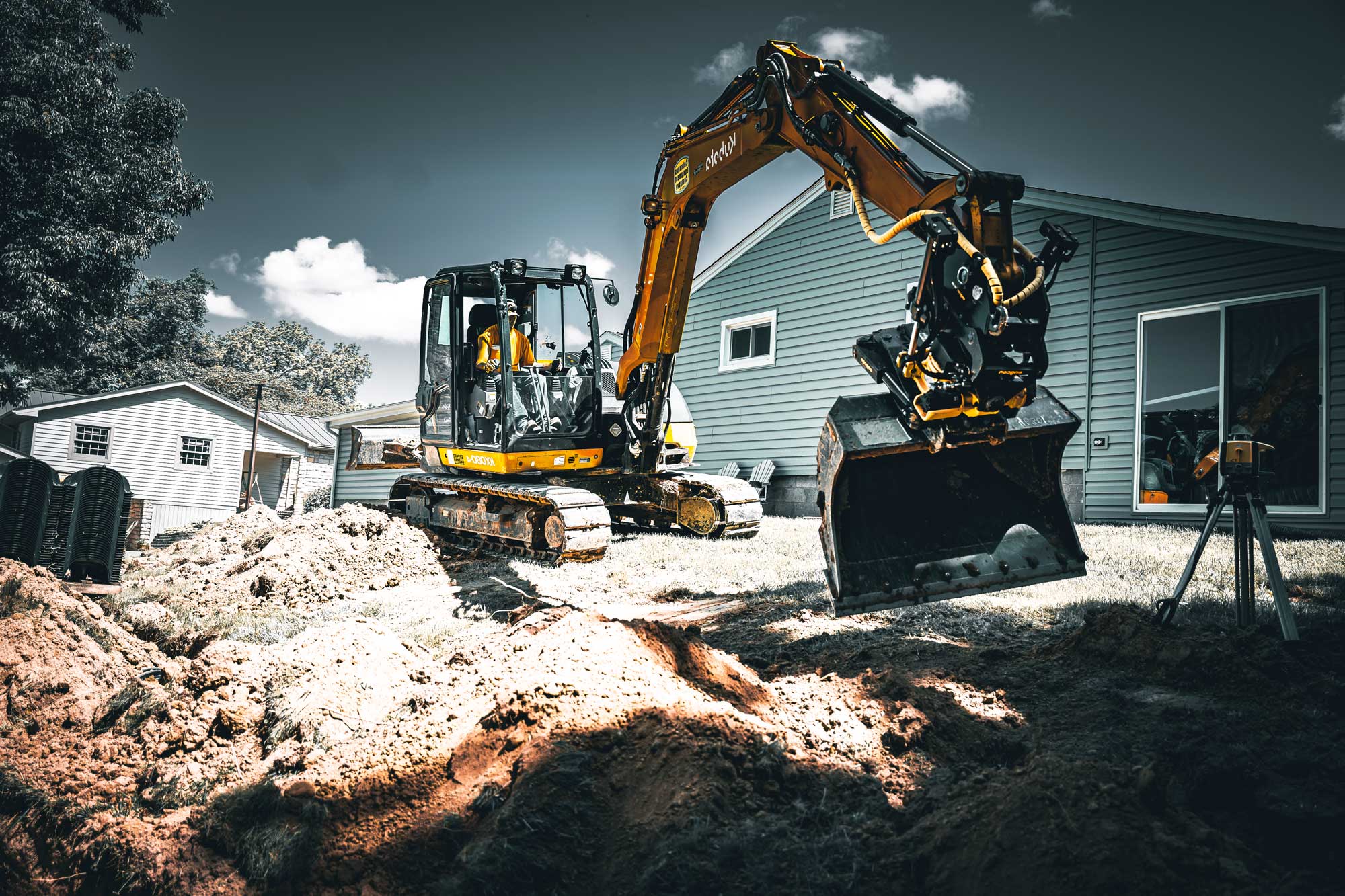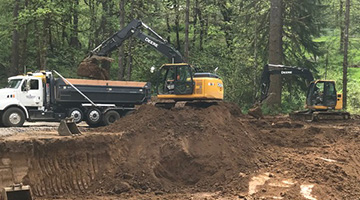Lancaster Trenching - Expert Trenching Solutions in Lancaster, Ohio
Unveiling the Art of Excavation: Pro Tips for Safe and Productive Digging
As soil is turned and earth is moved, the intricacies of excavation expose themselves, requiring a keen understanding of devices, dirt composition, safety procedures, and environmental considerations. The competence needed to navigate these elements effectively can indicate the difference in between an effective excavation project and a prospective disaster.
Value of Appropriate Equipment
To make certain the security and effectiveness of any excavation job, utilizing the proper equipment is critical. The right devices not just boost efficiency however additionally mitigate threats linked with excavating. Excavation projects differ in scope and complexity, ranging from little residential landscaping tasks to massive building and construction tasks. No matter the job size, having the right devices can make a significant difference in the result.
These flexible makers come in different dimensions to match different project demands. Small excavators are ideal for smaller sized tasks, while larger excavators deal with much more considerable projects successfully.
Aside from excavators, various other critical tools consists of dump trenchers, vehicles, and bulldozers. Discard trucks are vital for getting rid of and transporting excavated products, while trenchers are used for excavating narrow and deep trenches. Excavators stand out in tasks that call for pressing huge quantities of dirt or debris. By purchasing the ideal tools, excavation jobs can be finished securely, on schedule, and with accuracy.
Recognizing Soil Make-up
A thorough understanding of dirt structure is basic for carrying out excavation jobs with precision and safety. Recognizing the various types of soil is vital as it directly affects excavation approaches, devices choice, and overall job efficiency.
Sand particles are the biggest and give great drainage but supply little cohesion. Silt particles are smaller sized than sand but larger than clay, supplying moderate drain and communication. Clay bits are the tiniest and supply high communication yet inadequate water drainage. Raw material, such as rotting plant product, impacts dirt fertility and security.
Before starting excavation, carrying out soil tests to determine its make-up and qualities is important. This information assists in selecting the proper devices, applying security steps, and establishing excavation techniques customized to the particular soil conditions - excavating ohio. By understanding soil composition, excavation experts can enhance job outcomes while making sure safety and security and adherence to best methods
Safety Measures and Procedures
Recognizing dirt composition is the keystone whereupon safety steps and procedures for excavation jobs are developed, guaranteeing the well-being of workers and the success of the endeavor. When it pertains to safety during excavation, there are a number of crucial steps that need to be implemented to minimize dangers and avoid crashes.
Most importantly, before any type of digging commences, a comprehensive examination of the website ought to be conducted to recognize any possible dangers such as underground utilities, unsteady soil conditions, or close-by structures that could present a threat. It you could try these out is critical to have a qualified person look after the excavation procedure to make sure that all security procedures are adhered to strictly.
Furthermore, all workers entailed in the excavation must be correctly trained in safe digging methods and the correct procedure of tools. By adhering to these security steps and methods, excavation projects can be finished effectively and without incident.
Effective Excavation Planning
When beginning on an excavation task, meticulous planning is important to make certain performance, security, and effective outcomes. Efficient excavation preparation includes several crucial actions that are important for the smooth implementation of the project.
When the site evaluation is total, the following action is to develop a clear timeline and routine for the excavation activities. This includes figuring out the sequence of jobs, equipment needs, and workforce allotment. Correct organizing assists prevent delays and makes certain that the job remains on track.

Moreover, interaction among all group members is paramount during the planning phase. Clear directives, normal updates, and reliable control are vital for an effective excavation job. By spending effort and time in careful planning, excavation groups can dramatically enhance productivity, reduce dangers, and achieve successful outcomes.

Managing Ecological Factors To Consider
With increasing emphasis on ecological sustainability in construction techniques, managing environmental considerations has come to be a vital facet of excavation tasks. Excavation tasks have the possible to impact the surrounding setting through soil disintegration, debris overflow, environment disturbance, and contamination of water sources. To minimize these risks, it is necessary to implement ideal methods that prioritize environmental management.

Furthermore, proper waste administration is vital to prevent soil and water contamination. Applying treatments for the disposal of dangerous materials, recycling of waste materials, and decreasing using unsafe chemicals can substantially lower the environmental effect of excavation jobs. By integrating these techniques into excavation preparation and execution, construction companies can make sure that their tasks are not just safe and efficient yet also ecologically liable.
Verdict
To conclude, mastering the art of excavation needs a detailed understanding of correct devices, dirt composition, precaution, and effective preparation. By following these guidelines and thinking about environmental elements, excavations can be conducted safely and successfully. It is crucial to prioritize safety and productivity in every excavating job to guarantee successful end results.
As dirt is turned and planet is relocated, the ins and outs of excavation reveal themselves, requiring a keen understanding of equipment, dirt make-up, safety procedures, and environmental factors to consider.To guarantee the safety and efficiency of any type of excavation job, utilizing the proper equipment is critical.A comprehensive grasp of soil composition is basic for implementing excavation tasks with accuracy and safety. Recognizing the different kinds of dirt is important as it directly impacts excavation methods, equipment selection, and general task effectiveness. By comprehending dirt check my site composition, excavation specialists can enhance job end results while making sure safety and security and adherence to best techniques.